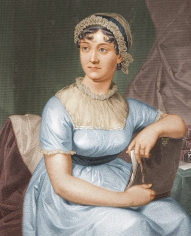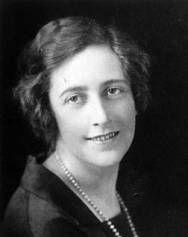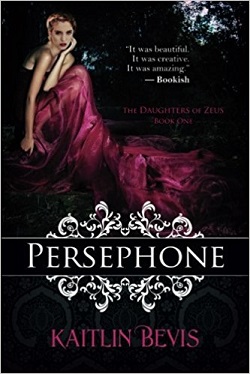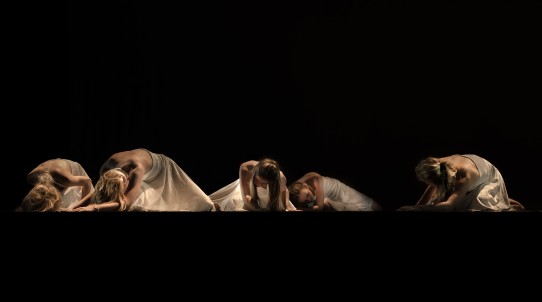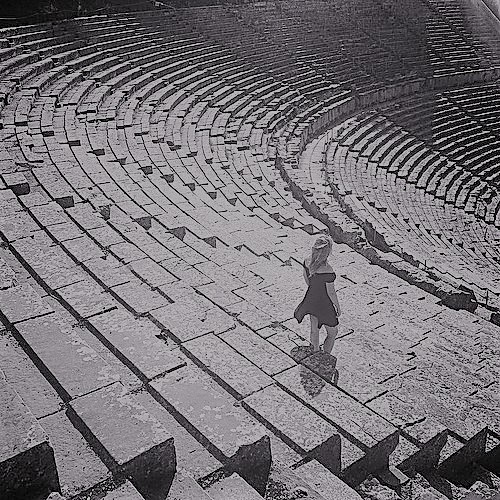It’s no great secret that medieval literature is my favorite period of literature. I read monastic authors…for fun. I get that’s weird to most people, but the older I get, the more I realize everyone has their “weird thing.” It’s what makes people fun. And when K.P. requested that this month’s theme be about romance, my mind went instantly to one of my favorite (and weird) romance stories of the middle ages.
Well, really, it’s my favorite because it’s weird.
But also, because it isn’t just a romantic match ignited by physical passion; rather, the passion was ignited by intellectual equality. I’ve always joked I’ll find my perfect match when our hands touch reaching for the same book at Barnes & Noble…I imagine that’s what the “meet cute” was like for Abelard and Heloise.

Heloise’s uncle wanted only the best education for his niece. Contrary to many misconceptions, women could receive an education in the middle ages…provided they could pay for it. And Heloise’s uncle could. Heloise’s reputation as an intellectual–and a beauty–attracted Peter Abelard, who offered his tutoring services. The two began a passionate love affair that ended in Heloise’s pregnancy, forcing them to marry in secret–which she, knowing it would be the end to both their intellectual pathways, opposed.
Heloise’s uncle and other family members, however, believing that Abelard had ruined their kinswoman, sent a group to Abelard at an inn to attack him and have him castrated–a harsh, but poetic, punishment.
After this, Abelard and Heloise agreed to surrender to a monastic life. Yet, it is this life that leads them to engage in a series of letters which demonstrate their intellectual brilliance. They can no longer be physical lovers, but they can still love what fiercely attracted them to one another in the first place–the other’s mind. Though the letters, Problemata, and the relationship, are products of their time, and must be viewed thus, there is a very present equality in this relationship that seems almost ahead of its time.
For two people as passionate as Abelard and Heloise, one can only imagine how difficult their forced separation was. Yet it is evident from their correspondence that this separation split them in body only, not in heart, mind, or soul. Still, the pain of the physical separation is decidedly present in these letters, especially because, though they might see one another again, they would never be able to communicate on the same level they once had. They must find a new way to relay their passions for one another. In her letters to Abelard and in Problemata, Heloise seems to find a new way to reassess the relationship by attempting to adjust to her new life, going back to their beginnings, and manipulating the subject matter.
In her letters to Abelard, Heloise makes it clear that though she lives a monastic life, she does not feel it as she ought; rather, she does it for his sake (69). Still despite her claim that she is “sighing” over her lost love, and not her sins (68), she does make an astounding effort in her new life by engaging Abelard in various theological matters, as she does in Problemata. After Heloise’s letter to Abelard claiming her distress at their situation, Abelard replies by telling her the reasons they must endure this trial and asking that she speak no more of it. In her reply, Heloise consents to not mention it, and immediately turns to other subjects. But before doing so, she notes that Abelard “has it in [his] power to remedy my grief, even if [he] cannot entirely remove it” (93). She agrees to make the attempt for his sake, but by ending the subject thus, she not only gives herself the final word, but also lets him know her feelings toward his request without seeming ungrateful. It is, in a sense, a very diplomatic way of ending a conversation that respects Abelard without debasing herself. She holds him as equal, and expects the same in return.
Another way that Abelard and Heloise seem to renegotiate their relationship is by

returning to the origin of the relationship itself. They met over books, and Abelard notes that what drew him to her was her “gift for letters” (10). Once they begin their renegotiation, they return to that intellectual conversation. Problemata is an intellectual text in itself, in that Heloise poses theological questions and inconsistencies, and Abelard replies with his thoughts. Similarly, in their letters, after Heloise agrees not to mention her pain, she turns to Abelard and asks again for his tutelage. She wants him to come and teach her and the other nuns about the history of their order and to help her create a Rule by which they should live (94). This is a renegotiation in that in their original relationship, while Abelard was her tutor, they did much more than study. Now, it seems, he can teach her all he knows, and they can each focus on each other’s intellect, since the major physical aspect of their relationship is off limits.
A third way they reassess their relationship is through their “question and answer sessions.” In Problemata, Heloise is asking all the questions, but these questions, though not theologically simple, do not paint Heloise to be at all ignorant of their answers. A lawyer’s mantra is “Never ask a question to which you do not already have the answer.” This seems to be Heloise’s thoughts in Problemata, as well. She asks questions and sets up Abelard’s brilliant answer, so that she has created a dialogue piece that works kind of like a jigsaw puzzle: each piece fits together perfectly. She uses similar tactics in her letters to Abelard, posing questions to him which she—regarded as intelligent in her own right—could answer, but it seems her point is to distract herself and Abelard from their pain and turn to “more important” subjects (93). One such example in her letters that is vaguely reminiscent of Problemata is when she asks Abelard about idleness: “But was not Mary sitting idle in order to listen to the words of Christ, while Martha was working for her as much as for the Lord?…(110). This question sounds like her questions in Problemata, but in this instance, she goes on to answer it herself and even compare it to those in monastic life who chant and read God’s word, but never meditate on it (110). In this way, she manipulates the subject matter of their correspondence to distract from their physical separation and re-focus their energy on more intellectual (and, for the time period, read “higher”) matters.
Their first few letters definitely portray the pain Abelard and Heloise felt at their forced separation, but this does not mar their overall relationship. As Heloise shows Abelard she is adjusting to her life in the convent (whether or not she actually is), their relationship continues and evolves, showing not only each person’s intellectual prowess, but that each of their individual minds is strengthened when they are united as one.
Two heads really are better…especially when they respect the other’s intellectual capacity.
Works Cited
Abelard, Peter. The Letters of Abelard and Heloise. Betty Radice, trans. Penguin Books, 1974.
Featured Image
Fortescue-Brickdale, Eleanor. “Abelard and Eloise.” Golden Book of Famous Women, Hodder and Staughton, 1919.



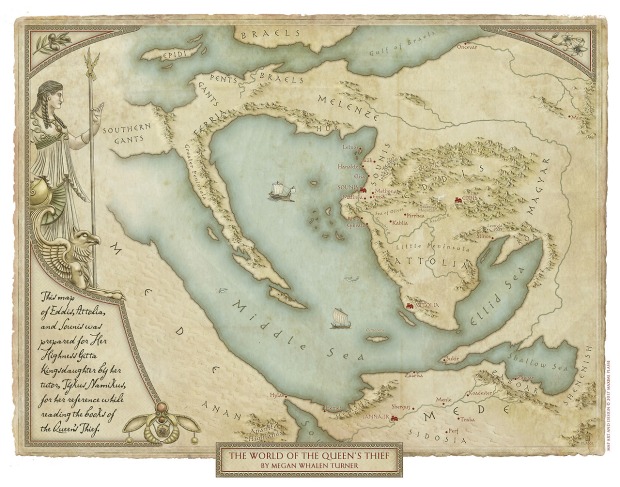
 “Standing in the light, surrounded by the dark beyond the lanterns, she seemed lit by the aura of the gods. Her hair was black and held away from her face by an imitation of the woven gold band of Hephestia. Her robe was draped like a peplos, made from embroidered red velvet. She was as tall as the magus, and she was more beautiful than any woman I have ever seen. Everything about her brought to mind the old religion, and I knew that the resemblance was deliberate, intended to remind her subjects that as Hephestia ruled uncontested among the gods, this woman ruled Attolia.” [1]
“Standing in the light, surrounded by the dark beyond the lanterns, she seemed lit by the aura of the gods. Her hair was black and held away from her face by an imitation of the woven gold band of Hephestia. Her robe was draped like a peplos, made from embroidered red velvet. She was as tall as the magus, and she was more beautiful than any woman I have ever seen. Everything about her brought to mind the old religion, and I knew that the resemblance was deliberate, intended to remind her subjects that as Hephestia ruled uncontested among the gods, this woman ruled Attolia.” [1] but perhaps she was never given the chance to be.
but perhaps she was never given the chance to be.
 pagan movement of modern day), the Bodhi Tree, its very name meaning the awakening or enlightenment of Buddha, and the Tree of Knowledge of the Judaic tradition. In each depiction, there are strong connections to humanity and the human experience. While the divine, or immortal may be connected to the tree, it is often in a human-like capacity that ascends into some type of enlightenment (in the case of monotheism, knowledge that leads to disaster). This can be explained by the idea that the tree is a mirror of humanity itself – ever rooted to the Earth by reaching for something greater, something higher, caught in a state in-between.
pagan movement of modern day), the Bodhi Tree, its very name meaning the awakening or enlightenment of Buddha, and the Tree of Knowledge of the Judaic tradition. In each depiction, there are strong connections to humanity and the human experience. While the divine, or immortal may be connected to the tree, it is often in a human-like capacity that ascends into some type of enlightenment (in the case of monotheism, knowledge that leads to disaster). This can be explained by the idea that the tree is a mirror of humanity itself – ever rooted to the Earth by reaching for something greater, something higher, caught in a state in-between.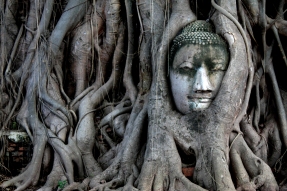 repetitive in Western culture. I’d like to examine these through the lens of the Greek myth of Daphne, the nymph lustfully pursued by Apollo until she is transformed into the laurel tree in order to escape. It is a timely myth to revisit for the modern audience, as many women via the Me Too movement have spoken out against male sexual misconduct, particularly from powerful men. It has spurred not only conversations on the sexual harassment, pressure and assault on women, but questions concerning sex and power dynamics.
repetitive in Western culture. I’d like to examine these through the lens of the Greek myth of Daphne, the nymph lustfully pursued by Apollo until she is transformed into the laurel tree in order to escape. It is a timely myth to revisit for the modern audience, as many women via the Me Too movement have spoken out against male sexual misconduct, particularly from powerful men. It has spurred not only conversations on the sexual harassment, pressure and assault on women, but questions concerning sex and power dynamics. greater, a life-threatening or ruining possibility.
greater, a life-threatening or ruining possibility.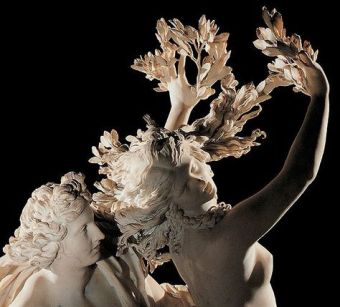 Daphne is described as athletic and when she flees, she gives a difficult pursuit for Apollo. But he is ultimately a god, so he is able to gain ground on her. Despite Daphne’s abilities, she cannot escape Apollo’s will. We could read this as despite female abilities and potential, women cannot escape society’s will.
Daphne is described as athletic and when she flees, she gives a difficult pursuit for Apollo. But he is ultimately a god, so he is able to gain ground on her. Despite Daphne’s abilities, she cannot escape Apollo’s will. We could read this as despite female abilities and potential, women cannot escape society’s will.
 the withdrawal of God’s protection. In Celtic culture, trees, or a grove can serve as a gateway to the realm of the faery, a mysterious world of amazement and entrapment, rife with equal parts wonder and danger. Such transformations and withdrawal from societal cooperation are by nature threatening to that society, but there is a freedom that can be found.
the withdrawal of God’s protection. In Celtic culture, trees, or a grove can serve as a gateway to the realm of the faery, a mysterious world of amazement and entrapment, rife with equal parts wonder and danger. Such transformations and withdrawal from societal cooperation are by nature threatening to that society, but there is a freedom that can be found. I met a lady in the meads,
I met a lady in the meads, warning to men of what could happen if women were allowed such self-direction. Indeed it hints at the very destruction of male power structures, “…pale kings and princes too, pale warriors, death-pale were they all.”
warning to men of what could happen if women were allowed such self-direction. Indeed it hints at the very destruction of male power structures, “…pale kings and princes too, pale warriors, death-pale were they all.”


 received such harsh reviews for The Awakening. Such negativity would have been enough to permanently discourage someone from trying to publish anything again, especially since that novel conveys such pure openness at the expense of risking reputation. But now the novel that was considered obscene and received scathing criticism is considered one of the most important works in literature, especially feminist literature.
received such harsh reviews for The Awakening. Such negativity would have been enough to permanently discourage someone from trying to publish anything again, especially since that novel conveys such pure openness at the expense of risking reputation. But now the novel that was considered obscene and received scathing criticism is considered one of the most important works in literature, especially feminist literature.

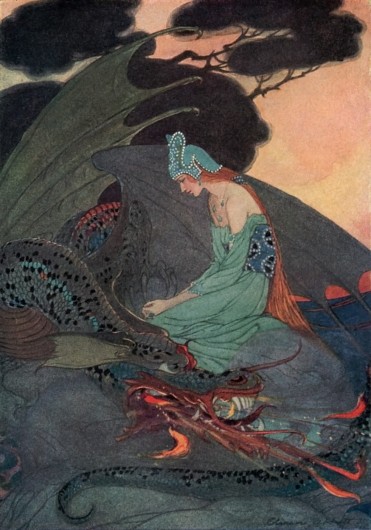

 Hildegard wrote what is commonly known as the oldest morality play, Ordo Virtutum. She was a pioneer of the study of natural sciences. She was a theologian. A scholar. A poet. A healer. A songwriter. My professor even described her as “an early sort of marriage counselor.” She was a Renaissance woman before the Renaissance was cool. And to think what the world would have missed out on, if we didn’t have her writings! If she had continuously refused to offer them.
Hildegard wrote what is commonly known as the oldest morality play, Ordo Virtutum. She was a pioneer of the study of natural sciences. She was a theologian. A scholar. A poet. A healer. A songwriter. My professor even described her as “an early sort of marriage counselor.” She was a Renaissance woman before the Renaissance was cool. And to think what the world would have missed out on, if we didn’t have her writings! If she had continuously refused to offer them.
